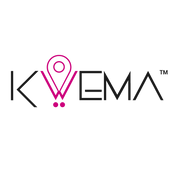Employee wellness, above all, is directly related to performance. Opening a dialogue with employees about safety and health should be a priority. Good communication skills, active listening, and well-organized meetings are key elements for effective safety conversations and building employee wellness programs. However, the reality is most companies fail to prioritize conversations around safety. Now, with the pandemic, addressing mental health in the workplace is increasingly more important.
- 78% of the US workforce say the pandemic has negatively affected their mental health
- 76% of workers think their employers could be doing more to support employees wellness and improve mental health awareness.
(Source: Oracle, 2021)

The first key to making employees feel comfortable in the workplace is leading by example: allow workers to express their views openly. Foster an environment where dialogue is received and employees are listened to.
“The example you set, and the way you talk to workers about safety, has a huge impact on the company's safety and health program, safety culture, and ability to reduce injury and illness.”
Communication sets a powerful example; making sure you are open-minded, accepting constructive feedback and avoiding threatening gestures might be useful when addressing these conversations. Remember that workers are unlikely to talk if they feel uncomfortable or threatened. Trust is important when communicating health and safety protocol.

Ways to begin
Make your voice heard. Communicate effectively by collecting recent and reliable information from OSHA, the National Institute for Occupational Safety and Health, and the Bureau of Labor Statistics to collect statistics, for example.
Finally, when striking up a conversation about safety with your employees, make sure to show your concern while acknowledging theirs. Take a look at this example conversation:
•“I’d like to talk to you about something important. Let’s review the safest way to do this task, so you and your team are not at risk of getting hurt.”
•“I respect your experience and want to make sure nobody is injured, so I’d like to work with you to address this issue.“
•“Can we talk about what I’m seeing and figure out a better way to do it?”
If you’re still not sure on where to start, contact us at Kwema and we’d be happy to walk you through proper communication techniques as well as developing a safe and effective health and safety plan for your workplace.
